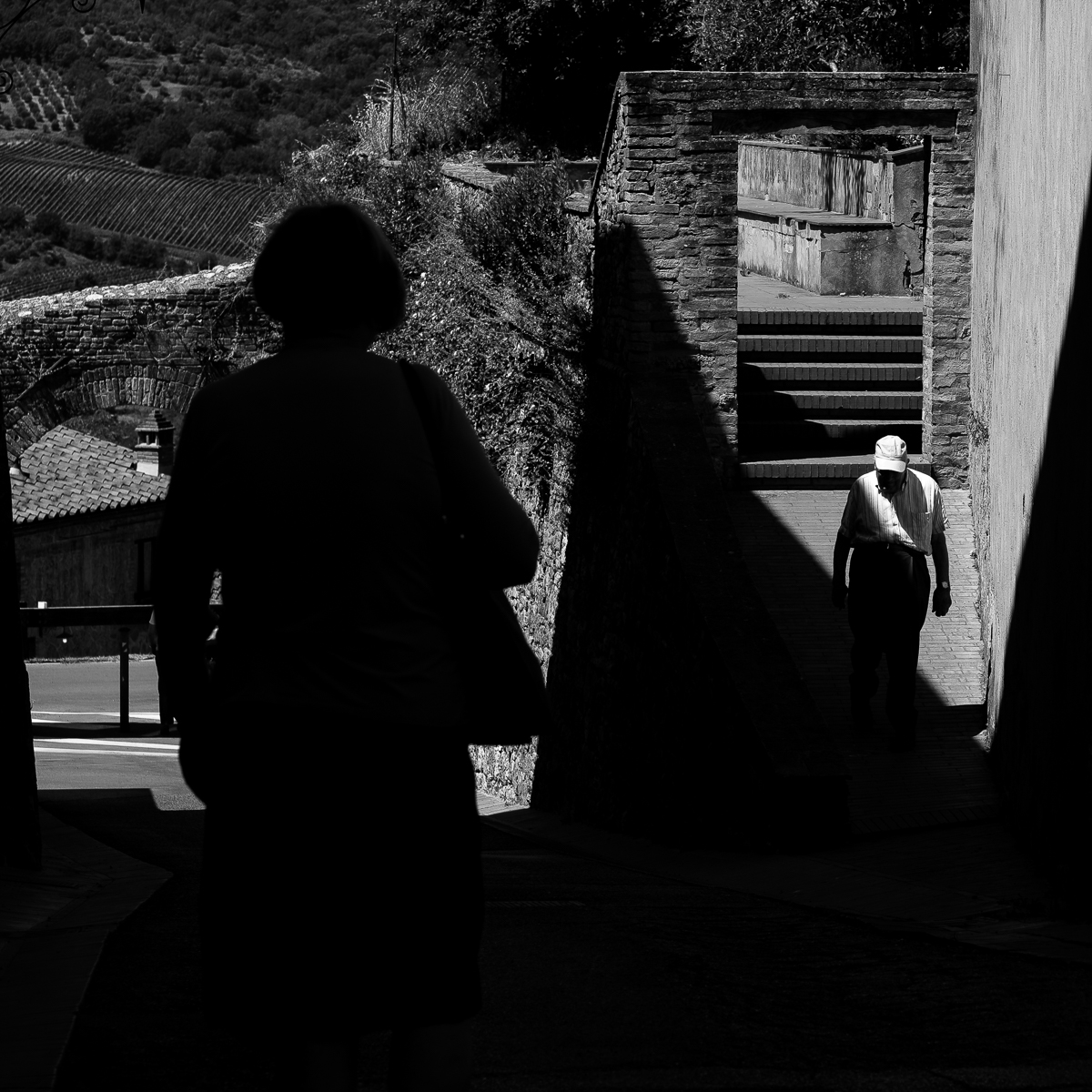There is something meditative about photography. This is especially true for photography on the street, as the many distractions in the chaos of everyday life mean that a special form of concentration is necessary.
Zen as an attitude of mind for the here and now can convey such an attitude in order to achieve focus and still serenity when taking photos.
My understanding of zen
Zen is a form of Buddhism as it is mainly lived in Japan today.
Due to various New Age trends in the 1960s and afterwards, “Zen” is often equated with reduced forms or a kind of minimalism in our western world, for example in Zen gardens.
This only partially corresponds to my understanding of Zen.
For me, Zen is a state of mind. A form of inner awareness of the here and now through concentration and contemplation. Whoever walks through life with this mindset will recognize the goal in the path. It is the merging of being completely with oneself with the all-embracing environment.
Through the meditative components in the form of zazen, the mind is trained to remain mindful and focused.
It is precisely this mindset that helps when taking photos in an urban setting.
Zen in photography
To convey what is going on when taking photos, I would like to use the analogy of hunting at this point. Interestingly, the phrase “to shoot a photo” is also used here in English. The photographer doesn’t do anything else: He doesn’t kill any animals, he hunts moments instead.
An interesting book that describes this connection between “shooting” and Zen is by Eugen Herrigel, Zen in the Art of Archery.[1]
Here are a few quotes:
This time they lingered completely oblivious to themselves and unintentionally in the highest tension; then the shot fell from you like a ripe fruit.[2]
In order to unleash the highest tension of this spiritual alertness, you have to carry out the ceremony differently than before: like a real dancer dances. When you do this, the movements of your limbs spring from the center in which right breathing occurs.[3]
Is it me who draws the bow, or is it the bow that draws me into the highest tension? Is it me who hits the target or is the target hitting me? Is the ‘it’ spiritual in the eyes of the body and physical in the eyes of the mind – is it both or neither? All this: bow, arrow, target and I intertwine so that I can no longer separate them. And even the need to separate has disappeared. [4]
And? Did you, dear reader, recognize yourself in these sentences?
There were days when I plugged in my in-ear headphones and then danced through people to music. Dodging a ballet and meandering through the crowds and taking photos without focusing while trusting that the camera’s autofocus would fix it.
There were other days when I had moved the camera to my head and instinctively pulled the trigger, as if in a frenzy, deeply absorbed, like a machine, without really being aware of what I was photographing.
It wasn’t important either.
It was the act of taking photos, of becoming one with the camera, that let me act and make the decisions. It wasn’t ME who took the photos; it was IT that made me follow tension and prints from my subconscious.
The journey of photography was the goal, not the photo itself.
Breathing technique as a meditative element
Meditation is an essential aspect of Zen. Correct breathing is essential in meditation.
By slowing the breathing to a calmer rhythm and being aware of this breathing through concentration, the mind is calm. This thinking enables the focus on the photographic motif. Of particular importance in street photography, because the moments are fast moving. There is no time for decisions, but the mind must be so clear and focused that it can reflexively reel off a program when the “command” to trigger is given.
This calm breathing can be trained. Both in your own meditation exercises and through the meditative aspects of walking through the streets itself.
Scientists have found that a breathing rate of 4 seconds of inhalation and 6 seconds of exhalation leads to increased inner peace.[5] Just try it out.
Zen in photo design
As stated above, form reduction as a method of minimalism is not my primary understanding of Zen.
Rather, the reduction in the photo is a “waste product” of conscious action in the sense of Zen. Those who follow the path of Zen and are in the here and now will not allow themselves to be distracted, but instead focus on the essentials.
As a result, the photo appears reduced as a result in many contexts.
This can be intensified in post-processing.
Sometimes, at least that’s how I feel, when I post-process a lot of photos, I get into a kind of meditative flow state that is similar to the one described above. Too much information is perceived as annoying in the long run and I sometimes caught myself setting stronger black-and-white contrasts towards the end of the editing session and filtering out unwanted image information.
The photos created in this way appear reduced, more minimalistic.
Summary
The meditative elements of Zen can help you take better photos through their focusing mindset.
Correct breathing plays an important role in this.
A reduction of image elements is then more the result of the focused approach in the act of taking photos.
1
[1] O.W. Barth Publisher
[2] page 65
[3] page 68
[4] page 76
[5] Spectrum of Science compact 45.20, page 9

